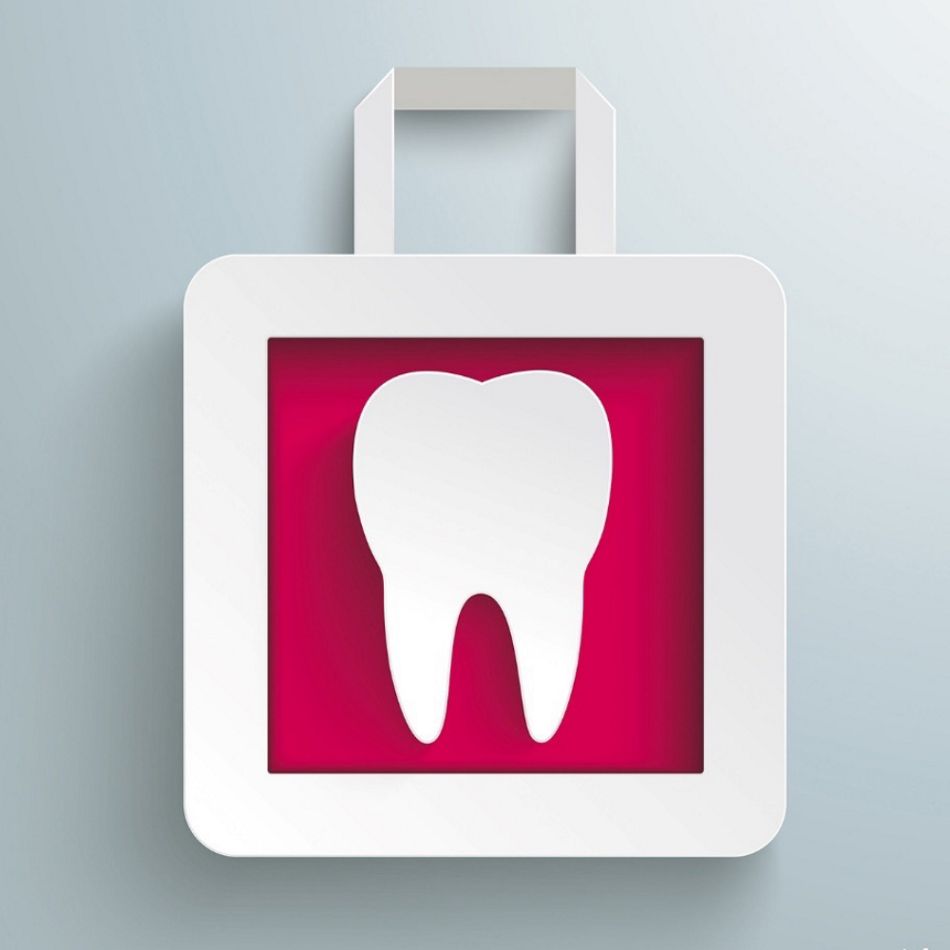
Why dentists should look to the retail industry
We won’t be shocked if at least a few dentists are reading this and have an immediate aversion to the idea. Dentists— like all other healthcare providers— are meant to put the patient’s best interest first. It’s not about getting a sale or “hustling” to earn commission.
Don’t worry— that’s not what we’re talking about. We’re specifically going to look at how you can take certain practices that the retail industry uses for the customer journey to improve your patient experience. And yes, some of them will help you attract more patients, but none of it is about sleazy selling techniques.

Here are the reasons why it’s so important:
- Patients today have plenty of choices in most cities for dental care; the internet both makes it easy to shop around and overwhelming. Taking certain steps can help your patients find you and feel confident about you before they even set foot into your practice.
- Patients want a positive experience, not just clean teeth. Trust is so important; if customers show up and feel as if you don’t care, you may not be experienced, or that they can’t trust you, they’ll walk away feeling buyer’s remorse just like they would bringing home a product that breaks in two days. If they feel that once, they likely won’t return.
- Patients “shop” for additional services like veneers, cosmetic surgery, and orthodontic options. They may not even think to ask you about it in practice, so having information available that you can give patients both online and in person can let them know they can come to you. It also can help you come up in relevant searches to find new patients.
4 things dentists can learn from the retail customer experience (& how to adopt it for their practice)
There are four core things that dentists can learn from how the retail industry seeks to improve and optimize the customer experience. Let’s take a look at each and how you can adopt them for your practice.
Customers trust reviews (& need prompting to give them)
Online reviews from real customers (not influencers or affiliates) are the most trusted marketing messaging out there— second only to a direct referral from a friend or family member.
91% of users in younger generations actually trust online reviews just as much as this referrals from friends and family.
Most retail customers will actually seek out reviews before making almost any buying decision. If they’re going to spend a significant chunk of time reading reviews for items like toilet paper, chapstick, or throw pillows, you can expect that they’ll do the same for something as significant as dental care.
Reviews can help you build trust quickly, showing new patients that others have had great experiences with you. This can bring new patients to your practice, and it also can help them feel more comfortable before ever setting foot in your clinic, which can make it easier for you to build a positive relationship quickly.
To take advantage of this, make sure that you send all patients a request to leave a review and a link to your Google My Business review page. This time-tested strategy from retail brands can build trust and give you a boost in search visibility.
Customers want information before purchasing
Retail customers like research. They don’t just check out reviews (which is absolutely part of the research process), but they want to know as much about a product and brand as possible before purchasing in many cases.
They may want to know what a product is made of, where it’s manufactured, or if it’s created using sustainable measures. How is it used and cared for? What kind of warranty is involved?


Want to stay up to date?
youTooth.com is THE PLACE TO BE IN DENTISTRY – subscribe now and receive our monthly newsletter on top hot topics from the world of modern dentistry.
It makes sense that patients may also have questions, and they’ll want to be able to research them online when actively making a decision. I recently had to find a new dentist, and looked online to find some that met basic criteria before I’d call to book an appointment.
Questions may include:
- What cleaning procedures does your clinic follow to keep team members and patients safe?
- What insurance do you take?
- What specific services do you offer and/or what products are used?
Keep in mind that they’re looking for reasons to choose you over another practice.
You can adopt this principle into your practice by doing the following:
- Create “behind-the-scenes” content on social media to introduce patients to your practice or explain why you have certain products or processes that you use
- Be transparent, answering user questions clearly
- Consider having an FAQ section on your site that answers commonly-asked questions new patients may have
- Keep your site and website up to date; this “legitimizes” you and shows that you’re invested in the patient’s experience
Customers want to feel cared about by retail brands
People have never wanted to feel like they’re being swindled into purchases; they want to feel like the sales person really cares about their specific needs.
This principle carries over into the healthcare world; patients absolutely need to believe that their dentist has their best interests at heart.
To help with this, make sure that you’re focusing on building a personal relationship just like a salesperson would. To do this, consider the following:
- Be patient when they have questions, and answer each one as thoroughly as possible while offering to find out if you don’t know the answer
- Focus on building a personal relationship, asking questions about the patient and even taking notes after the appointment on what was discussed; you can pick this up and ask about it the next time you see each other
- Never treat the patient like they’re just a number in the queue of the day, even if you’re busy
- Be careful not to oversell or upsell products or services; this rubs patients the wrong way
Customers want convenience
One reason that customers love online shopping options is how exceptionally convenient it is.
Younger generations are preferring to manage more experiences online as much as possible, and they are looking for increased convenience with things like online appointment booking and payment processing, too.
Think about your current patient experience.

- Do they need to wait on hold to schedule or change an appointment?
- Do they need to wait until your next appointment availability to come in and talk about test results from an oral cancer screening?
- Is it an exceptional pain for them to pay a bill that they get in the mail? Or do you consistently have issues with a team member billing users first before their insurance?
If so, you may want to look at digitizing your customer experience, or at the very least finding ways to simplify that process. This will go a long way in helping patients have a more positive experience, which means that you’ll retain them for longer, too.
Final thoughts
The retail industry is deeply competitive, meaning that their best practices are designed to help them attract, retain, and sell more to customers. These same principles can be applied to dental practices for the same purposes, as long as building strong relationships and creating trust are at the center of what you’re doing.
Want to learn more about how to improve your patient’s experience and grow your practice?
- How to use Instagram Live to grow your dental practice
- Is Virtual Dentistry here to stay?
- The Generation Gap: Reaching Everyone from Baby Boomers to Gen Z on Social Media
- eBook: How to improve your online patient communication strategy
- ITI Blog
Meta description: There’s a great deal that dentists can learn from the retail customer experience. See the top 4 and how to adopt them to improve your patient experience.